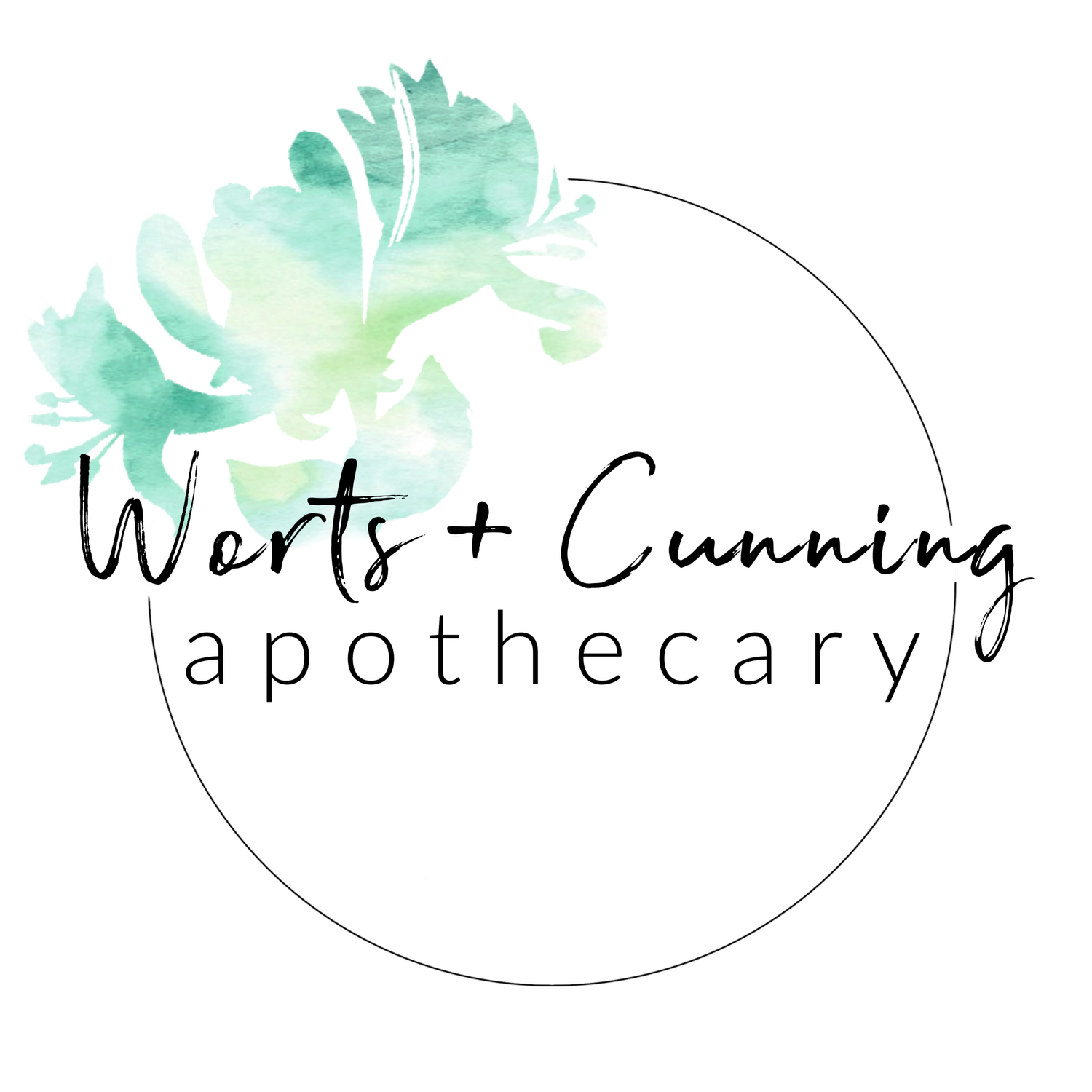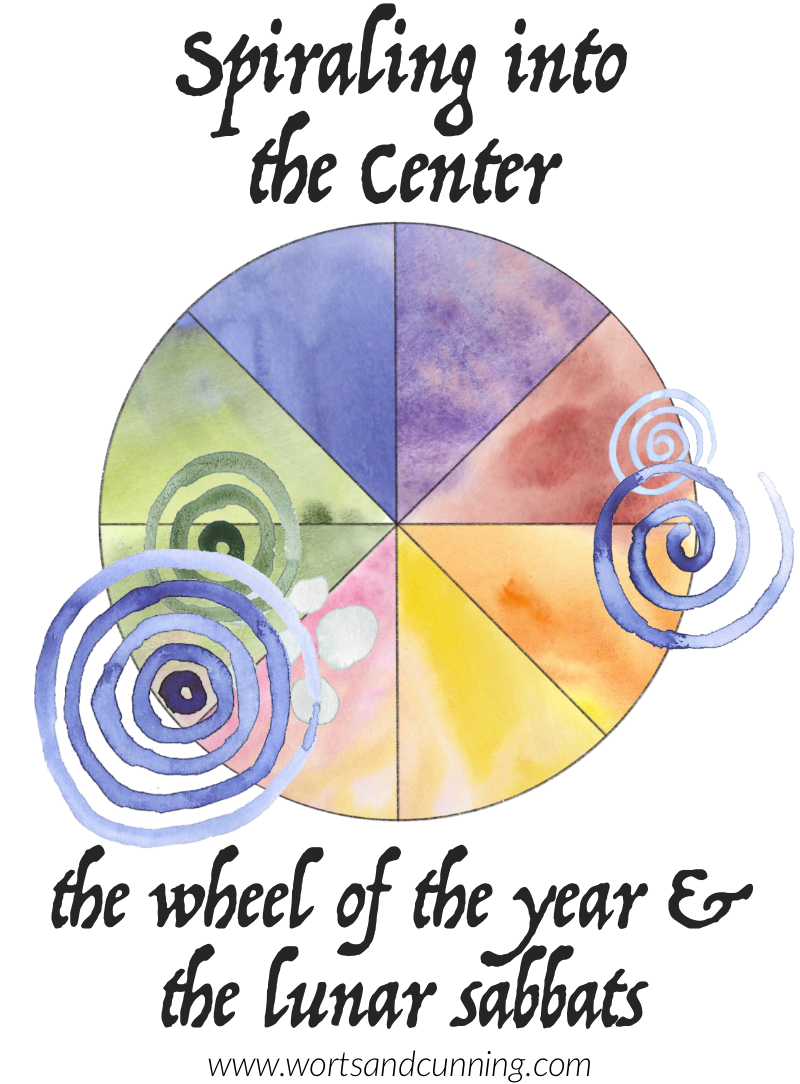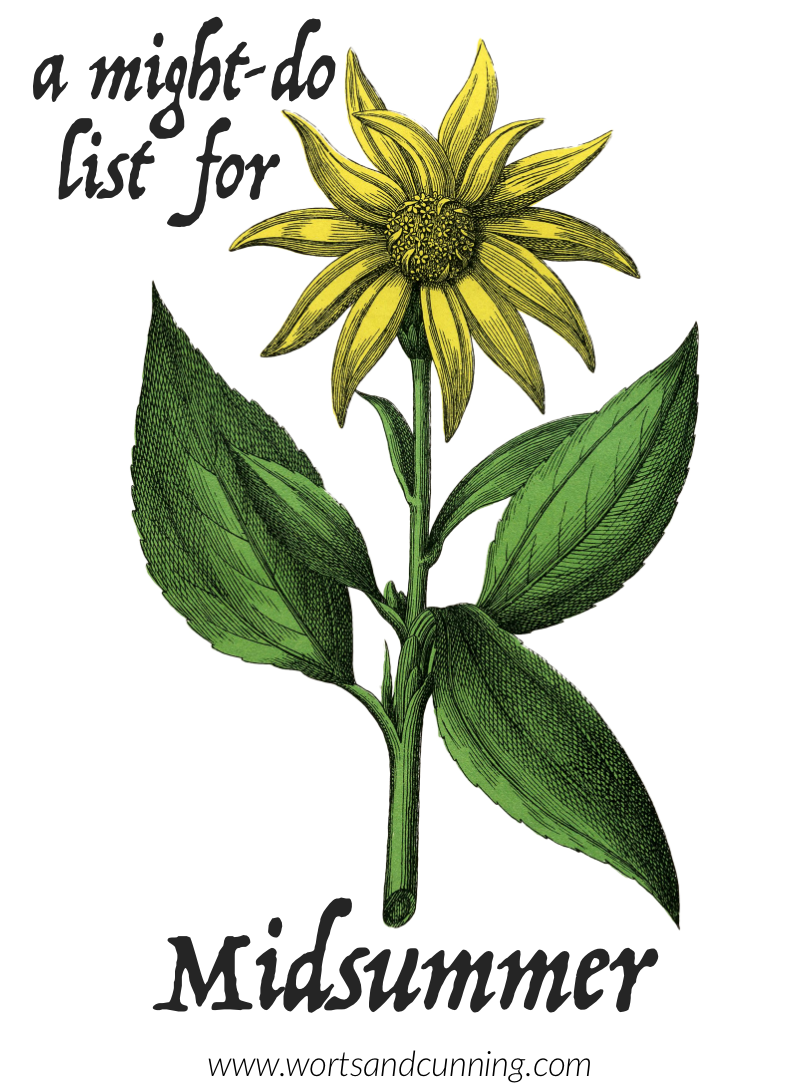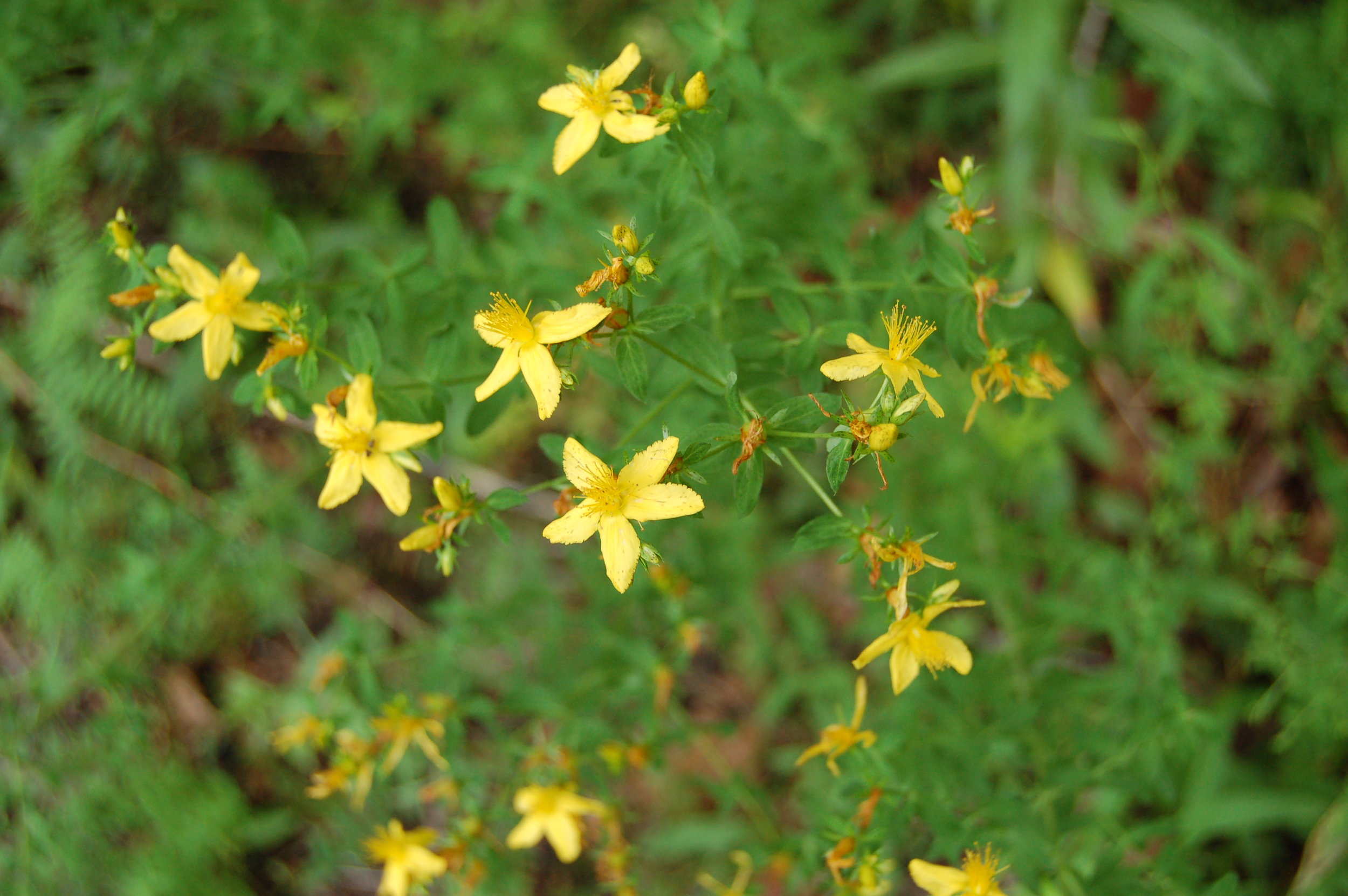Spiraling Into the Center: The Wheel of the Year & Lunar Sabbats
My herbal and magickal practice is deeply tied to the rhythms of the land - and that rhythm is set by the steady turning of the Wheel of the Year. The sacred turning of seasons known as the Wheel of the Year is celebrated by modern Pagans who either are Wiccans or Druids or practice a tradition derived from (at least in part) Wicca or modern Druidry. That is not to say that the festivities found within the Wheel of the Year are exclusively Wiccan or of the Druid tradition, but the structure of these celebrations within an eight Sabbat format is directly derived from Wicca and modern Druidry as we’ll learn below.
I realized that while I’ve been writing about the individual Sabbats, I hadn’t taken time yet to invite you in to learn more about the Wheel of the Year as a tradition, from its structure to ever-changing meaning to the ways that we shape it into a tradition informed by the land we live with. So in this three part series I’ll do just that!
Let’s start by diving into where the Wheel of the Year comes from and it’s structure. If you’re looking for a broader discussion on making the wheel of the year more personalized to your practice, come this way.
Where does the Wheel of the Year come from?
While there was no ancient version of a eight Sabbat Wheel of the Year, each Sabbat is based on ancient seasonal and celestial festivities for time periods important to those ancient peoples as reflected in the sacred sites left across the United Kingdom, Ireland, and Europe (such as Stonehenge) as well as the folk festivals and customs that survived from Pagan periods. The Wheel of the Year is one of the most popular modern Pagan calendars, but it is not the only one and there are lots of culturally and locationally specific calendars with additional or completely different festivals. Hellenic Pagans, for example, celebrate festivals based on ancient Greek tradition exclusive of or in addition to the Wheel of the Year.
The Wheel of the Year as we know it today is based on scholarship and modern inspiration, primarily - though not exclusively - codified in the 1950s by Gerald Gardner, the father of modern Wicca, and Ross Nichols, founder of the Order of Bards, Ovates, and Druids. Early inspiration for the structure of the Wheel of the Year came from the work of Margaret Murray, Robert Graves, and earlier Victorian magickal practitioners and folklorists. If you're wanting to learn more about the history of the Sabbats, the wikipedia page on the Wheel of the Year is pretty great with a lot of good resources in the endnotes.
Structurally, the Wheel of the Year is a made up of eight seasonal festivals, spaced roughly six weeks apart, that consist of festivals of primarily Celtic, Anglo-Saxon, and pre-Celtic British origin. The codification of the Wheel of the Year happened between Gardner and Nichols, where "popular legend holds that Gardner and Nichols developed the calendar during a naturist retreat, where Gardner argued for a celebration of the solstices and equinoxes while Nichols argued for a celebration of the four Celtic fire festivals, and combined the two ideas into a single festival cycle." (1)
Names for the Sabbats were developed on further in the 1970s by Aidan Kelly, another early influential figure in Neopaganism, furthered named three Sabbats: Litha for the Summer Solstice, Ostara for the Spring Equinox, and Mabon for the Autumn Equinox. (2)
If you're looking for the primary resources used for the reconstruction of these Celtic, pre-Celtic and Anglo-Saxon festivities, the Celtic Reconstructionists have compiled vast resource lists. Paganachd is a good place to start with extensive guides to reconstructing Celtic traditions and what that means as well as a good reading list to start working through. I recommend enjoying the primary resource rather than getting too stuck with the gatekeeping and constant search for authenticity (which is such a complicated idea when it comes to spiritual and cultural practices) that can go on in some of the CR forums. For a deep dive into the origins of the Wheel of the Year, and just how Celtic it is or is not, as well as exploring the Coligny calendar (the oldest surviving example of a Celtic solar-lunar ritual calendar), The Celtic Calendar and the Anglo-Saxon Year by Richard Sermon is a good read.
What is the structure of the Wheel of the Year?
The eight Sabbats of the Wheel of the Year fall into two categories: The Cross Quarter Festivals and the Quarter Festivals. If you want to see additional names for each Sabbat and well as more information on how to celebrate each, be sure to click through the links for profiles on each.
Cross Quarter Festivals (aka The Fire Festivals or The Greater Sabbats):
Quarter Festivals (aka The Solstices and Equinoxes or The Lesser Sabbats):
The "Quarter" is in reference to the four quarters of the year which can be measured seasonally (spring, summer, winter, and fall) and astrologically (i.e. the start of a season measured by entry into one of the four cardinal signs of the zodiac). The Quarter Sabbats mark the beginning and end of each season while the Cross Quarter Sabbats mark the height of each season. This measurement doesn't always make sense outside of specific environments (i.e. more northern climates), but for many Pagans, there is still an energetic if not obvious start, height, and end to each season that roughly aligns with the Sabbats. So, with this understanding:
Yule is the end of autumn, beginning of winter and Imbolc marks the height of the winter season.
Ostara is the end of winter, beginning of spring and Beltane marks the height of the spring season.
Litha is the end of spring, beginning of summer and Lughnasadh marks the height of the summer season.
Mabon is the end of summer, beginning of autumn and Samhain marks the height of the autumn season.
Finally, the Celtic people did mark the dark half and the bright half the year, which has influenced the way the modern Wheel of the Year is conceived. Samhain to Beltane is the dark half of the year, while Beltane to Samhain is the bright half of the year. Samhain, the beginning of the dark half of the year, marked the beginning of the year for the Celts, much as sunset marked the start of the new day. Marking the beginning of the year at Samhain is commonly celebrated by many Witch folk, myself included.
In the above graphic you might have noticed a series of eight symbols or glyphs in the center of the wheel corresponding to each of the Sabbats. I don’t know where these originated from and I have a vague memory of figuring this out years ago but haven’t been able to find my notes on the matter if I did (take good notes, kids!). I think that the Quarter Festivals were created first, followed by the Cross Quarter ones, but again that’s going on fuzzy memory at this point. If you know the origins of the Sabbat glyphs, please let me know. The glyphs may represent the following:
The Samhain Glyph: A sacred knot representing the cycle of life death and rebirth, showing the interconnectedness between the worlds.
The Yule Glyph: Winter store of food, people, embers of the fire and/or a sacred cairn or burial mound showing stylized bones and points of life (representing the hope of rebirth) within.
The Imbolc Glyph: Shows new seedlings and plants emerging from the earth after winter.
The Ostara Glyph: The young emerging Sun/Horned God. I also see this as an egg symbol cracking open.
The Beltane Glyph: The maypole! Or wheat stalk representing agricultural fields.
The Litha Glyph: The Sun at full maturity pouring light out across the land.
The Lughnasadh Glyph: Perhaps representing the setting Sun, who is now in decline at the beginning of the harvest season.
The Mabon Glyph: A stylized cornucopia overflowing with plenty, also perhaps a stylized stang.
When are the Sabbats celebrated?
The Cross Sabbats are observed on fixed dates throughout the year - through you might find discrepancies between texts on what dates they should be fixed to. Some books for example will say that Lughnasadh is on August 2 while others will say it is August 1. What's happening here is that for the Celts the start of a new day began at sunset - so the sunset of August 1 to the sunset of August 2 would be a day within a Celtic calendar. Hence, Lughnasadh can be celebrated from sundown on August 1 to sundown on August 2 or on just one of those days.
The Quarter Sabbats are celebrated at the solstices and equinoxes which are astronomical events that have slight variation from year to year. Yule, for example, might be on December 19 one year and December 21 the next year depending on when the earth's pole tilts furthest away from the Sun.
The dates for each Sabbat (Northern Hemisphere):
Samhain : October 31
Yule: On the day of the Winter Solstice usually around December 19 - 23
Imbolc: February 1 - 2
Ostara: On the day of the Spring Equinox usually around March 19 - 23
Beltane: May 1 - 2
Litha: On the day of the Summer Solstice usually around June 19 - 23
Lughnasadh: August 1 - 2
Mabon: On the day of the Autumn Equinox usually around September 19 - 23
The dates for each Sabbat (Southern Hemisphere):
Samhain : May 1 - 2
Yule: On the day of the Winter Solstice usually around June 19 - 23
Imbolc: August 1 - 2
Ostara: On the day of the Spring Equinox usually around Septmeber 19 - 23
Beltane: October 1 - 2
Litha: On the day of the Summer Solstice usually around December 19 - 23
Lughnasadh: February 1 - 2
Mabon: On the day of the Autumn Equinox usually around March 19 - 23
While the dates I just listed are the most common observational times for each Sabbat, there is also the astrological timing of each Sabbat. For the Quarter Festivals, the above and below dates align (i.e. the Winter Solstice happens when the Sun enters the sign of Capricorn at 0 degrees). It is with the Cross Quarter Sabbats that you find variation of dates. You can reference an ephemeris or your favorite astrological calendar for these dates. While celebrating the Sabbats on the above dates are most common, there are a number of Pagans, especially those with an affinity for astrological work, that celebrate the astrological dates Sabbats, too.
The astrological timing for each Sabbat (Northern Hemisphere):
Samhain: Sun at 15° Scorpio
Yule: Sun at 0° Capricorn
Imbolc: Sun at 15° Aquarius
Ostara: Sun at 0° Aries
Beltane: Sun at 15° Taurus
Litha: Sun at 0° Cancer
Lughnasadh: Sun at 15° Leo
Mabon: Sun at 0° Libra
The astrological timing for each Sabbat (Southern Hemisphere):
Beltane: Sun at 15° Scorpio
Litha: Sun at 0° Capricorn
Lughnasadh: Sun at 15° Aquarius
Mabon: Sun at 0° Aries
Samhain: Sun at 15° Taurus
Yule: Sun at 0° Cancer
Imbolc: Sun at 15° Leo
Ostara: Sun at 0° Libra
Each season of a Sabbat lasts for one and a half signs of the zodiac. So Yule lasts all 30 degrees of Capricorn and 15 degrees of Aquarius. Then Imbolc begins on 15 degrees Aquarius and moves through the last 15 degrees of Aquarius and then all thirty degrees of Pisces. And so the wheel turns and turns through all of the signs of the zodiac.
You may have noticed that the Wheel of the Year is shown moving counter-clockwise - this is to match the Wheel with the zodiac. The planets move through the zodiac in a counter-clockwise motion so the zodiac is drawn to reflect that. To match the Wheel of the Year with the zodiac it moves in a counter-clockwise motion, too.
What are the Lunar Sabbats?
I've been seeing Lunar Sabbats showing up more and more in recent years where before they were mostly known to folks who purchased We'Moons - which makes sense because it was the folks at We'Moon (according to email conversations with them) who partially developed the practice. I love celebrating Lunar Sabbats and was lucky to be introduced to them early on in my practice of shifting time away from a measurement that is capitalistic and consumption based to one that is cyclical and reverent to bodies, places, and spaces beyond commodification. I've written about Lunar Samhain before, but here is a brief summary from my personal practice of what a Lunar Sabbat is.
Lunar Sabbats are different than Esbats - a term introduced by Margaret Murray and popularized within Wiccan tradition - as the celebration of different lunar phases (primarily New and Full Moons). Esbats are another beautiful tradition and deserve their own post, but Lunar Sabbats are tied to the solar based Wheel of the Year and serve as Moon-based equivalents to the Cross Quarter Sabbats or the Fire Festivals of Imbolc, Beltane, Lughnasadh, and Samhain. Why not the Quarter Sabbats, too? Because the Quarter Sabbats, marked at the solstices and equinoxes are already celebrations of both solar and lunar movements.
Because of their origin partially within the We’Moon community, the Lunar Sabbats are tied to womxn's culture and feminist spirituality, connecting to a powerful thread of revolutionary and transformative magick. (3) For me, I love celebrating the Lunar Sabbats as a more quiet, more intense, and more personal Sabbat celebration. When I’m able to, after attending a public and community-oriented Sabbat celebration, I love being able to gather together with close witch kin for a Lunar Sabbat celebration. If the Sabbats are a bright mirror reflecting the energy of the season in our lives, the Lunar Sabbats are the black mirror of scrying, where we draw energy up from our depths and are guided by the turning of our inner compass.
The Lunar Sabbats can be measured in different ways, the simplest being the Full or New Moon closest to the solar date of a Sabbat (i.e. the New Moon closest to October 31 to mark Lunar Samhain) with New Moons for the dark half of the year (Samhain and Imbolc) and Full Moons observed for the bright half of the year (Beltane and Lughnasadh).
Then there are two different ways to measure the astrological timing to the Lunar Sabbats. The first is how the Sabbats are measured via the We'Moon calendar system.
In the Northern Hemisphere:
Lunar Samhain: New Moon in Scorpio
Lunar Imbolc: New Moon in Aquarius
Lunar Beltane: Full Moon in Scorpio
Lunar Lughnasadh: Full Moon in Aquarius
In the Southern Hemisphere:
Lunar Samhain: Full Moon in Scorpio
Lunar Imbolc: Full Moon in Aquarius
Lunar Beltane: New Moon in Scorpio
Lunar Lughnasadh: New Moon in Aquarius
The above system has a beautiful and purposeful symmetry to it. The dark half of the year at Samhain marked with a New Moon Lunar Sabbat is reflected in the bright half of the year with a Full Moon Lunar Sabbat at Beltane. The same symmetry is found at Imbolc and Lughnasadh. This is the system you’ll find in your We’Moon planner.
The second way of calculating the Lunar Sabbats is:
Northern Hemisphere:
Lunar Samhain: New Moon in Scorpio
Lunar Imbolc: New Moon in Aquarius
Lunar Beltane: New Moon in Taurus
Lunar Lughnasadh: New Moon in Leo
Southern Hemisphere:
Lunar Samhain: New Moon in Taurus
Lunar Imbolc: New Moon in Leo
Lunar Beltane: New Moon in Scorpio
Lunar Lughnasadh: New Moon in Aquarius
With this system, all four dates for the Lunar Sabbat are more directly tied to the solar astrological timing of the season (i.e. Beltane happens when the Sun is at 15° Taurus so the New Moon in Taurus becomes Lunar Beltane). Which is the better system? There’s no better system - it’s completely a matter of personal preference and whatever way gets you showing up to the work of knowing yourself and holy community. I’ll be writing about each of the Lunar Sabbats in the future, so if you want to know when those posts will be published you can sign-up for my newsletter.
Is the Wheel of the Year an exclusively Celtic, pre-Celtic, Anglo-Saxon thing?
A little bit yes but mostly no. Yes, in the sense that these are seasonal festivals based on practices from these specific cultures. I think it's important and really enlightening to know the origins of the Sabbats (as much as we can) and give honor to the ancestors who helped their descendants to dream of them again. It is no small feat after centuries of forced conversion and propaganda against Pagan ways that the Wheel of the Year, a Pagan and earth-honoring system of experiencing time and toppling oppressive nature-denigrating institutions of power, is part of one of the most rapidly growing religions (at least in the United States of America). (4)
And also no, in the sense that the Wheel of the Year has grown far beyond the confines of a tiny island nation and the people like Gerald Gardner, Ross Nichols, Margaret Murray, Doreen Valiente, and Robert Graves who were attempting to revive a cultural inheritance at danger of being lost. It's important to remember that we don't know exactly how or why Celtic, pre-Celtic, and Anglo-Saxon peoples celebrated seasonal changes and even if we did have exact details of these festivities, we are not our ancestors, but their miraculous descendants who live in a different time though connected through the land, sea, and sky. In that spirit I see the Wheel of the Year as a living, breathing, and adaptable tradition, meant to be celebrated by a wide and diverse network of people committed to earth-based spiritual practice.
The beauty of the Wheel of the Year and the fact that its celebrations are rooted to seasonal changes means that it’s a framework that can be applied to any part of the world by the Pagans who live there. I think that the Wheel of the Year works for so many Pagans around the globe because of this flexibility of application and I find this vastness of shared seasonal philosophy to be beautifully unifying amongst a people who have no central leadership (with the exception of a few tradition-specific groups) or singular holy book and pride themselves on being both community-oriented and idiosyncratic.
What is the spiritual meaning of the Wheel of the Year?
That, my friends, is what we'll be exploring in our next post.
✨
The title for this post was inspired by a beautiful Pagan chant written by Beverly Frederick, from her album Into the Arms of the Wild, which goes as follows:
Spiraling into the Center,
the Center of the Wheel.
Spiraling into the Center,
the Center of the Wheel.
We are the Weavers, we are the woven ones
We are the Dreamers, we are the Dream.
We are the Weavers, we are the woven ones
We are the Dreamers, we are the Dream.
It’s a lovely song that I’ve sung dancing around Maypoles, journeying with community between the worlds at Samhain celebrations, and in hopeful revery during the longest night of the year. I hope it brings you a lot of joy, too. It can be especially beautiful to alternate “the Center of the Wheel” with the line “the Center of us All.”
If you're wanting to dive into more inspiration about the Wheel of the Year, check out my series of might-do lists for the Sabbats. I’ll be writing two more posts on the Wheel of the Year in the coming months as well as a series on the Lunar Sabbats a little after that, too. If you’re looking for more seasonal magick and healing, check out my Witchcraft + Weeds series.
Wherever the turning wheel finds you, I hope that you’re coming ever closer to home.
This post was made possible through patron support.
❤︎ Thanks, friends. ❤︎
Footnotes
(1) The Wheel of the Year. The whole relationship between Nichols and Gardner is a really interesting and influential one in the development of modern Paganism as Nichols was a covenmate of Gardner's and he would later go on to create the Order of Bards, Ovates, and Druids (OBOD) which is a supremely lovely community of magickal folk. Phillip Carr-Gomm, former head of OBOD, and who was a student of Nichols talks more about the relationship between Gardner and Nicholas if you're wanting to learn more - I believe in a Druidcast episode. And then if you're going to read about Gardner, please read everything you can about Doreen Valiente who rescued Wicca more or less (from innumerable (mostly) menfolk who couldn't seem to see beyond their own noses and were constantly embroiled in conflict with one another), infused it with incredible Goddess-led inspiration, and she was herself by all accounts a delightful and kind weirdo (and maybe a spy for the British government!).
(2) From The Wheel of the Year: "Aidan Kelly gave names to the summer solstice (Litha) and equinox holidays (Ostara and Mabon) of Wicca in 1974, and these were popularized by Timothy Zell through his Green Egg magazine." You can read more about Kelly’s thoughts behind the choices here.
(3) To be abundantly trans-inclusive, non-binary loving, genderweird, and gender atheist affirming (a few of those ways which I identify as, just fyi): Womxn's culture is inherently trans and nonbinary inclusive, open to all of those who in some way, shape or form identify as a womxn, and are participating in the long and varied tradition of being seen in the world as womxn and shaping culture from that perspective and experience.
(4) Growth of Religion. The United States also has a growing population of “Nothing. The United States is not the only place where modern Paganism is on the rise - it’s just the place I’m most familiar with Pagan demographics. Iceland, for example, has had a rapid rise of Ásatrú, which in some ways can be seen as a re-indigenization of a population.
The watercolors that I used to paint the illustrations used throughout this post were created by Ojibwe artist, Anong Beam. Please join me in supporting her indigenous, female-led, watercolor company, Beam Paints.































